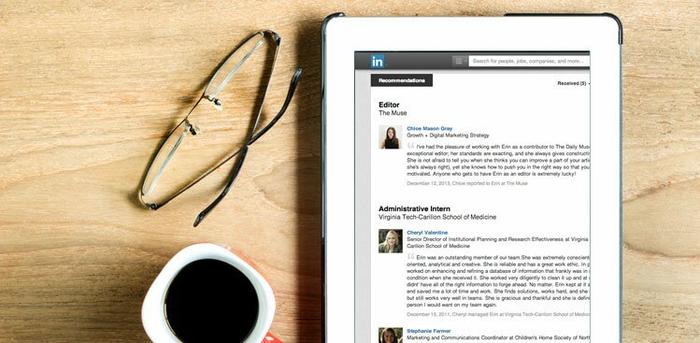
How do we as humans make purchase decisions? In large part, we make them based on social proof.
What do others say about this product or that? Does someone we admire and trust rave on and on about it? Think for a moment about Yelp. How many times have you gone right over to Yelp.com—not company websites—before trying out a restaurant, a new hair stylist, or a resume writer?
My guess is plenty. You do this because you want to see what others are saying, and you’re going to base your decisions, at least in part, on these reviews.
The same exact thing goes on with hiring decisions. The “consumer” in this case is a hiring manager, recruiter, or HR person. Only, they’re not looking on Yelp; they’re over on LinkedIn.
LinkedIn recommendations provide you with the perfect opportunity to share third party endorsements—or social proof—of your talents with people trying to make purchase (in this case, hiring) decisions.
Don’t squander this opportunity.
Instead, follow these tips to score some amazing, relevant LinkedIn recommendations.
1. Find the “Ask to Be Recommended” Page
I’m not being a smart aleck. If you’ve never asked anyone for a LinkedIn recommendation, you may not even know how to find the page.
Here’s what to do: Go to your profile, look for the “View Profile As” button, then click the arrow to the right of that. You’ll see “Ask to be recommended”—click that and follow the prompts.
2. Pick People Thoughtfully
This is no time to be willy-nilly with your requests. Your goal is to secure powerful recommendations that support your professional brand and the skills you most want to highlight. Ideally, you want to approach people who know your work well and can speak intelligently to the capabilities that will matter the most to your future employer.
3. Approach With Specificity
LinkedIn will default you to an incredibly lame and generic request message if you don’t personalize it otherwise—and you absolutely must zap this vanilla blabber and customize your own message. In this message, you want to share with the person you’re approaching exactly what you’d like, and how he or she can best help.
Try something along the lines of:
Hi Jill, I hope everything’s going well in Texas! I’m writing to ask if you’d be willing to write a LinkedIn recommendation for me that highlights my crisis communications skills. Ideally, I’d love for you to outline the experience you had with me through the Def Con 5 initiative last year in Tulsa. I’m working hard to transition into a senior communications role, and most of the employers I’m considering put a strong focus on crisis communications.
You get the point. Make sure to be gracious and thankful in this note and, at the end, encourage this person to let you know if you may ever return the favor. Reciprocity is a huge, wonderful thing.
4. Don’t Ask 10 People at Once
As a recruiter, I can always tell if someone has raced out and asked half the people in his network to give him a LinkedIn recommendation. How? They’re date stamped.
You want to make your recommendations look like they’re coming in organically rather than as a result of your strong-arming or bribing. Thus, space out your requests a little bit. Rome does not have to be built in a single day. Build thoughtfully, not hurriedly.
LinkedIn endorsements may be all the rage these days, but it’s the recommendations that pack the most punch when it comes to supporting your professional brand and telling the world that you’ve got the goods.
Go use them to your advantage.